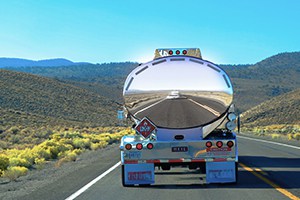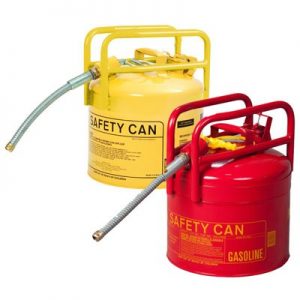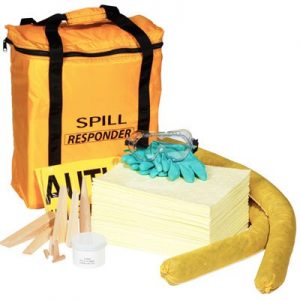Navigating the risks: Ensuring safety in chemical transportation
Transporting chemicals safely should be a top priority for all companies. Driving on public roads is dangerous enough, but this level of danger is multiplied when you add chemicals into the mix. Whether it’s a short drive around the block or a cross-country excursion, companies need to follow proper safety guidelines when transporting chemicals. The February 2023 Ohio derailment that released toxic chemicals is a testament to this.
Here, we’re going to take a closer look at chemical transportation safety, revealing some of the potential dangers companies face along with solutions to the problem.
Chemical Transportation by the Numbers
According to AmericanChemistry.com, nearly a quarter of all U.S. chemicals and chemical products are transported by rail. Thanks to the regulations and guidelines set forth by Homeland Security—among other federal bodies—rail transportation has become increasingly safe over the years. In 2022, railroads moved 2.3 million carloads of chemical products with more than 99% safely reaching their destination. Don’t let this fool you into thinking Congress is ‘comfortable’ with the current numbers, however. On the contrary, numerous organizations along with Congress are constantly working to establish new safety guidelines and regulations to reduce the chance of rail accidents.
Not all companies rely on rail systems to transport their chemicals. It’s not uncommon for companies to use traditional semi-tractor trailers to pull chemical loads across the states. This, of course, opens up a whole new world of possible dangers and hurdles. Even if the driver performs his or her job correctly, there’s always the chance of nearby motorists failing to pay attention on the road. Each year, there are an estimated 6 million accidents on U.S. roads and highways, some of which involve trucks transporting chemicals.
Common Risks in Chemical Transportation
Chemicals are used in a wide range of industries, including manufacturing, agriculture, healthcare, and more. As these chemicals move from production facilities to end-users or other locations, ensuring their safe transportation becomes paramount.
Chemical transportation poses various risks that need to be carefully addressed to ensure safety. One of the most common risks is the potential for spills or leaks during transit. These incidents can occur due to accidents, equipment failures, or improper handling. Spills and leaks can lead to environmental contamination, health hazards for workers, and even explosions or fires in extreme cases. It is crucial to have preventive measures in place to minimize the occurrence of such incidents and to have effective emergency response plans in case they do occur.
Another risk to consider is the transportation of incompatible chemicals. Some chemicals can react violently when combined, leading to hazardous situations. Proper segregation and labeling of chemical containers are essential to prevent accidental mixing during transportation. Additionally, the risk of theft and unauthorized access to hazardous materials should also be addressed through secure packaging and strict access control measures.
To mitigate these risks, it is essential to have a comprehensive understanding of the chemicals being transported, their properties, and the potential hazards they pose. This knowledge allows for better planning and the implementation of appropriate safety measures throughout the transportation process.
Federal Regulations Governing Chemical Transportation
To maintain uniform safety standards and prevent hazardous incidents during chemical transportation, the United States government has established several regulations. Compliance requirements may include proper labeling and documentation of hazardous materials, specific packaging and handling procedures, training and certification for personnel involved in chemical transportation, and adherence to specific transportation modes’ guidelines, such as those for road, rail, air, or sea transport.
Some of the key federal regulations include:
- Hazardous Materials Transportation Act (HMTA): Enforced by the U.S. Department of Transportation (DOT), this act sets guidelines for the safe transportation of hazardous materials, including chemicals, by various modes such as road, rail, air, and water.
- Department of Transportation Regulations (DOT): The DOT issues specific regulations for the packaging, labeling, and placarding of hazardous materials to ensure proper identification and handling during transportation.
- Resource Conservation and Recovery Act (RCRA): This act establishes guidelines for the safe management and disposal of hazardous wastes, including chemicals generated during transportation accidents.
- Comprehensive Environmental Response, Compensation, and Liability Act (CERCLA): Also known as the Superfund Act, CERCLA addresses the cleanup of hazardous substance releases that may occur during transportation incidents.
The Occupational Safety and Health Administration (OSHA) also has guidelines for keeping employees safe when transporting hazardous materials.
Business Responsibilities in Chemical Transportation Safety
Businesses involved in chemical transportation must take proactive steps to ensure safety at every stage of the process. Here are some key responsibilities they should adhere to:
-
Proper Packaging: Chemicals should be stored and transported in appropriate containers that meet regulatory standards. For example, DOT-approved gas cans with robust designs that will withstand potential impacts or leaks. Use stands, straps, or racks to secure pressurized gas cylinders in place during transit.
- Detailed Labeling: Including clear and accurate information about container contents—be it flammable or corrosive—is also essential for safe transportation. In the event of an accidental spill, this ensures the appropriate, compatible remediation cleanup equipment can be used.
- Employee Training: Employees involved in chemical transportation should receive thorough training in the safe handling, loading, and unloading procedures.
- Route Planning: Companies should carefully plan transportation routes to avoid densely populated areas, sensitive ecological zones, and areas prone to natural disasters.
- Emergency Response: Businesses must have a well-defined emergency response plan in place to address spills, leaks, or accidents promptly and efficiently.
- Vehicle Maintenance: Regular inspections and maintenance of transportation vehicles and equipment are also important to identify any potential issues that could compromise safety. Routine checks will ensure that vehicles are in good working condition, and identify any repairs or replacements that are necessary.
Have an Appropriate Spill Kit Ready when Transporting Chemicals
The number one rule when transporting chemicals is to keep the appropriate spill kit on hand. Let’s hope it never happens, but in the event of a spill, a spill kit will allow the driver to help control the chemical. Spill kits are generally broken down into one of three different categories: Universal, Oil-Only, and Hazmat. Universal spill kits are designed for spills containing either water or hydrocarbon chemicals, while Oil-Only kits are designed specifically for oil. Lastly, chemical hazmat spill kits are geared toward corrosive acids, solvents, and other ‘aggressive’ chemicals.
You can browse through our selection of spill kits here. When choosing a spill kit for your company’s transportation logistics, it’s recommended that you consider the type and amount of chemical being transported. Doing so will ensure the driver has all the necessary equipment to contain a spill during the transportation of chemicals.
Conclusion – Take Action for Chemical Transportation Safety
In the world of chemical transportation, safety is paramount. With the potential dangers that come with handling and transporting hazardous materials, it is crucial to have robust systems in place to minimize risks. Including the well-being of both the environment and employees.
Have questions about finding the right spill kit or other equipment for your chemical transportation safety needs? Contact Travis Zdrazil at travis@absorbentsonline.com or (800) 869-9633.


